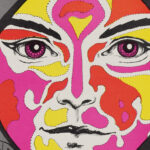For a fleeting moment, the fashion world, built on the cornerstone of exclusivity, seemed to be opening its doors in the digital age. However, as countless shows, personalities, and photo opportunities vie for attention online, luxury brands are feeling the pressure to stand out. This has led to a trend of creating increasingly extravagant and FOMO-inducing events, sometimes even transforming iconic locations into temporary runways.
Instead of relying on traditional, easily accessible fashion shows in conventional venues, many designers are opting for destination events, particularly for Resort and Cruise collections. These shows are strategically placed in exotic locales, transforming them into the ultimate Fashion Destinations.
Is this the fashion industry’s way of reinforcing its exclusivity? By choosing remote and luxurious settings that necessitate significant investment to attend, it certainly appears so. These fashion destinations raise the barrier to entry, naturally filtering out smaller brands, independent buyers, bloggers, and casual fashion enthusiasts, leaving the spotlight on industry giants.
Many designers have likened the meticulous planning and high stakes of a fashion show to a wedding, where location is paramount. Just as a destination wedding in St. Lucia ensures a VIP-only guest list, a destination fashion show achieves a similar effect. The less rigid scheduling of Resort, Pre-Fall, and Cruise seasons provides brands with greater freedom to explore diverse and captivating fashion destinations. “There’s not a ‘Resort Week’, so there’s a little more flexibility for destinations,” as noted by fashion industry experts.
Following the pioneering example of Karl Lagerfeld, who consistently staged Resort shows in glamorous locations frequented by his clientele, leading fashion houses like Dior, Louis Vuitton, and Dolce & Gabbana are now curating shows that are increasingly costly, opulent, remote, and undeniably Instagrammable. These carefully selected locales are not just backdrops; they are integral to the brand narrative, becoming iconic fashion destinations in their own right.
It’s a modern adaptation of “if you build it, they will come.” Fashion editors, influential figures, and key buyers are constantly traveling, accumulating air miles like never before, all expenses largely borne by the hosting brands.
“Most of these fashion destination shows are for Resort and Cruise collections, hosted by luxury giants like Dior, LVMH, Chanel. These companies invest millions,” explains a fashion industry insider. “They cover travel and accommodation for everyone, including celebrities. The entertainment, the entire experience – it’s a massive expenditure, but it’s a core component of their marketing and PR strategy, and they have the resources to execute it.”
Beyond the complimentary travel, the perks of attending these fashion destinations are considerable. Louis Vuitton’s Palm Springs show, strategically timed post-Coachella, showered attendees with lavish gifts. “After the show, there were lunches, dinners, and even a carnival with games and booths – and everywhere you looked, there were buckets filled with Vuitton wallets, leather goods, and makeup cases,” recounted an industry observer. “Guests left with armfuls of Vuitton merchandise. This level of extravagance is what these leading brands deliver. Each fashion destination show is a unique, unforgettable event.”
The crucial question remains: what is the return on investment for these design houses and their stakeholders? How do they monetize these visually stunning and extensively photographed productions, which prioritize ambiance and exclusivity over immediate B2B or direct client sales? Consider Fendi’s 2008 spectacle on the Great Wall of China, orchestrated by Lagerfeld. Models paraded on the ancient landmark, showcasing designs already unveiled in Milan weeks prior. The Great Wall, in this context, was transformed into an unparalleled fashion destination.
That show wasn’t about premiering new designs; runway images from Milan were already widely circulated. Instead, it was about spectacle, drama, and Fendi and Lagerfeld’s ability to mobilize the fashion elite across continents for a monumental photo opportunity. The Great Wall became more than just a location; it became a powerful symbol, a breathtaking fashion destination that amplified brand prestige and global recognition.
Rather than a traditional sales-focused event, a destination fashion show operates as a high-impact ad campaign – a living, breathing tableau that embodies the collection’s essence while captivating editors and influencers. The allure of travel and luxury gifts simply enhances the experience, supplementing traditional advertising investments.
For the foreseeable future, these ultra-exclusive fashion destination shows appear to be the industry’s chosen path, reinforcing the Brand -> Editor -> Retailer -> Consumer model, albeit with a significantly elevated level of luxury and exclusivity. These destinations are not just locations; they are curated experiences designed to solidify brand identity, generate buzz, and maintain an aura of aspirational luxury in an increasingly accessible world.
